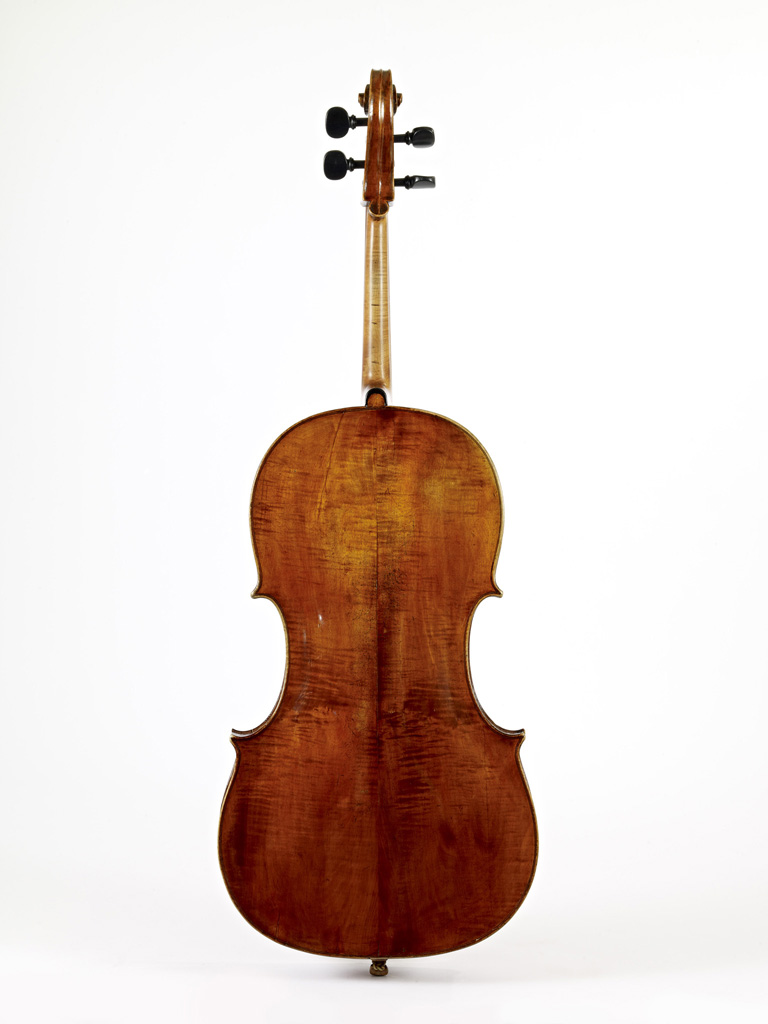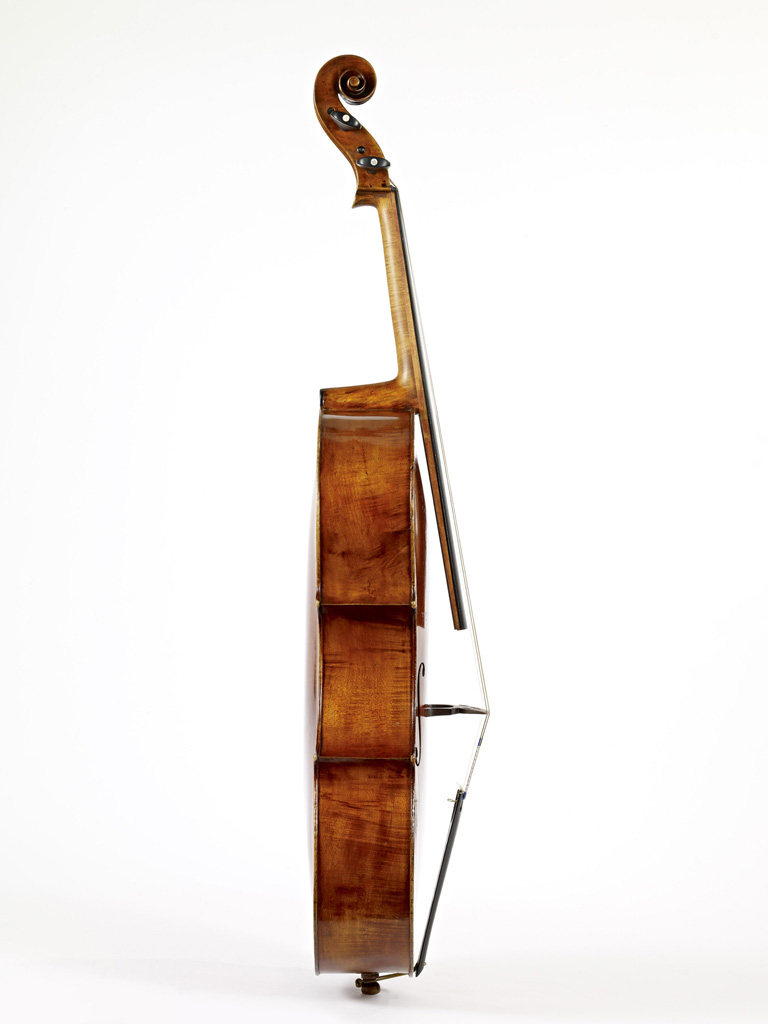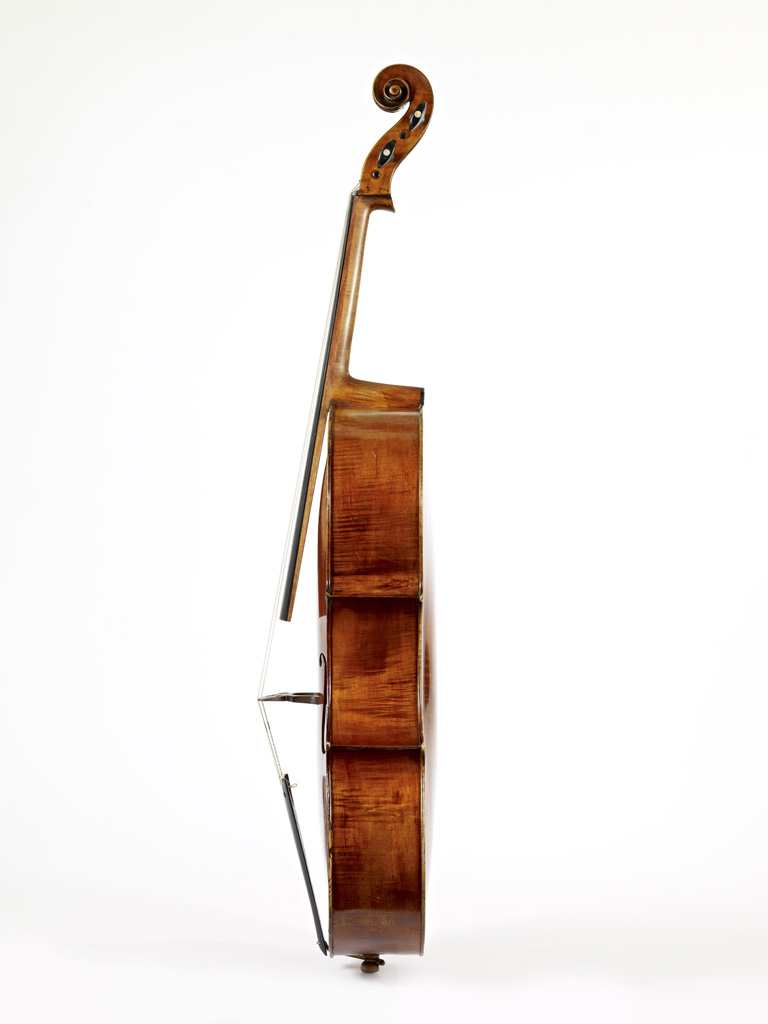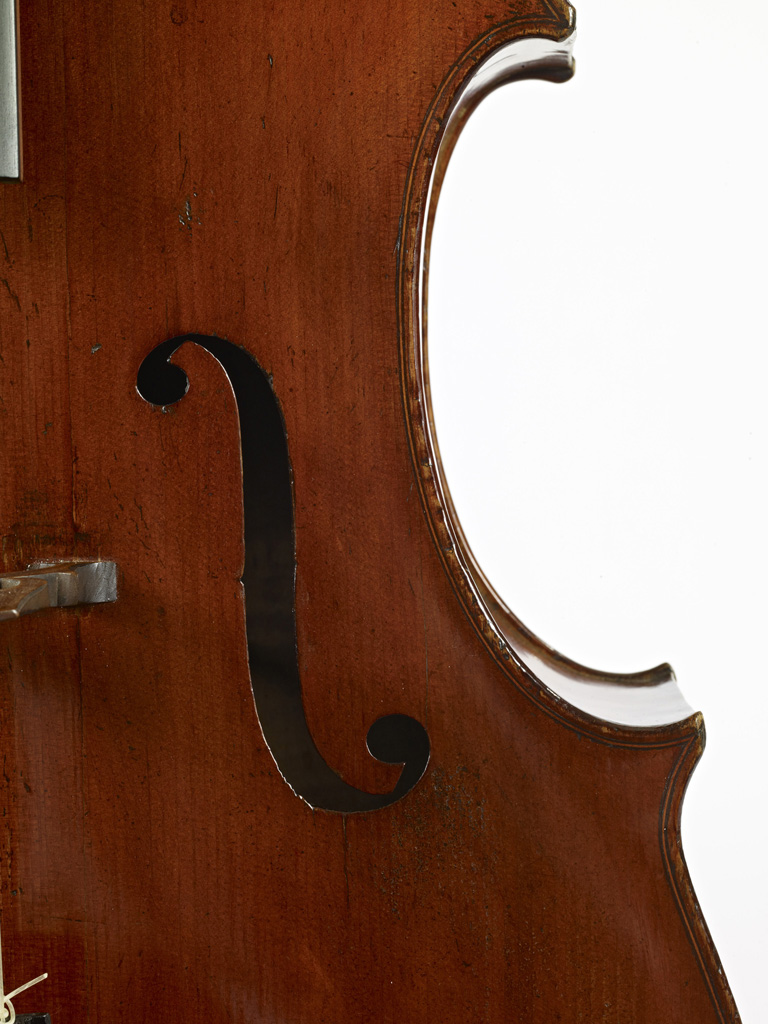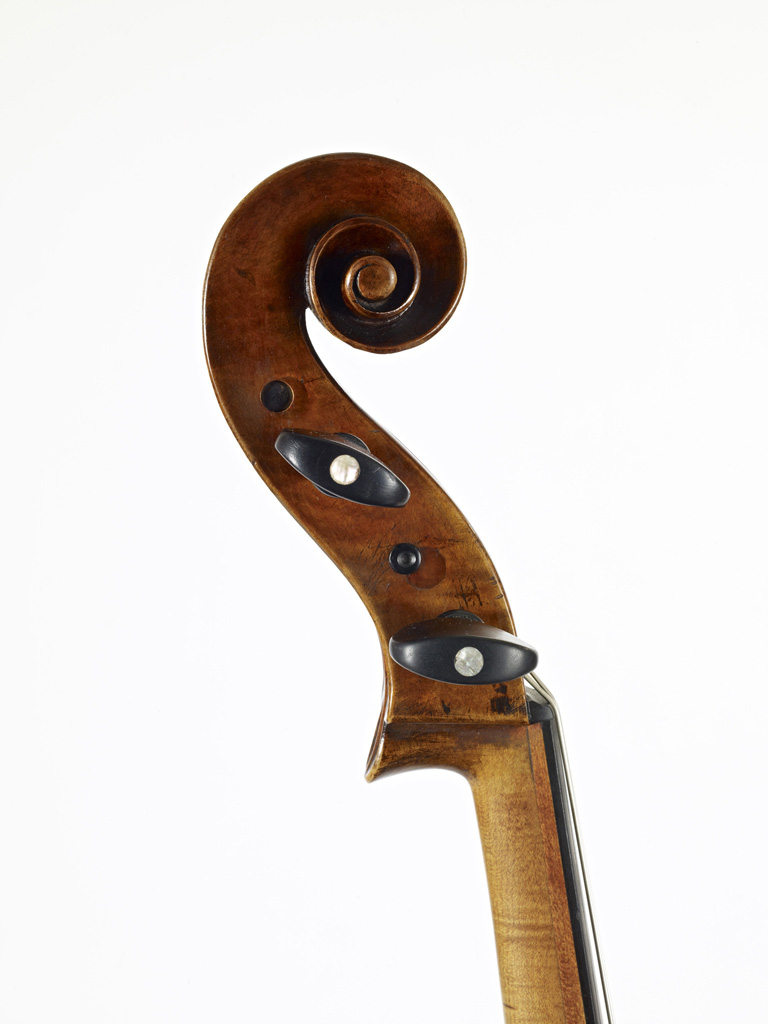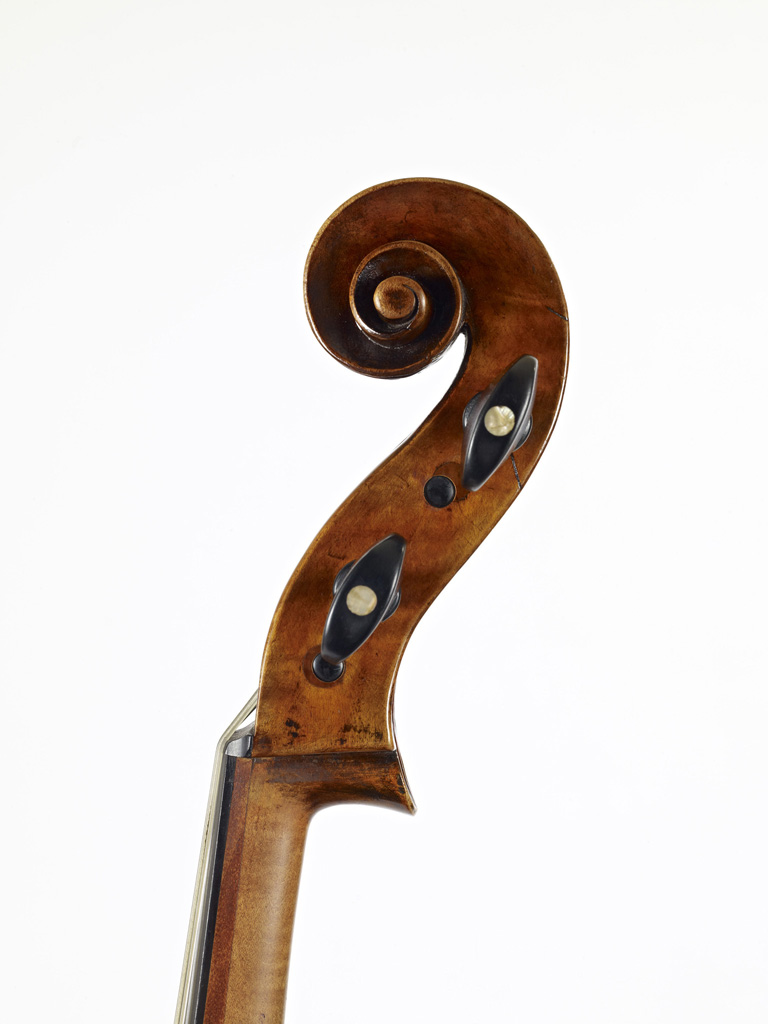The table is of two pieces, with an average 4 growth rings per cm. The F holes are wide cut and upright. The single black-white-black purfling is quite wide with three strips of equal thickness, the outer ones stained.
The back is two pieces of maple with wavy grain and irregular flame. The purfling is the same as that on the table. The ribs are six pieces of similar maple.
The neck and pegbox are of similar maple. The back of the pegbox does not taper, and only narrows over the scroll, with the narrowest point above the eye. The original pegholes, which have been bushed, were closer together than the present holes. The pegs are ebony with a pearl dot.
The ebony tailpiece is decorated with a pearl shield and dot.
The varnish is dark brown.
Body length 73.8
Body width
upper bout 34.5
center bout 25.2
lower bout 43.5
String length 69.0
Rib height
top block 11.5
upper corners 11.5
lower corners 11.5
bottom block 11.5
There is no label.
Bought in July 1976 at Sotheby’s, London


